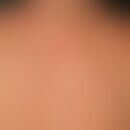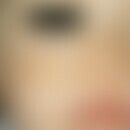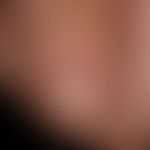Synonym(s)
DefinitionThis section has been translated automatically.
Onychophagia (from "onycho's" nail and "phagein" eating) refers to an autoaggressive habit; those affected cannot deal adequately with stress and tension. More rarely, onychophagia is triggered by a deeper neurotic disorder.
EtiopathogenesisThis section has been translated automatically.
Adolescents are particularly predisposed who are constricted in their motor skills and/or emotionally left alone and are therefore unable to live out tension-related aggressive behaviour or other feelings. Biting the nails, for example, is considered to be an inappropriate (inadequate) removal of emotions or even a substitute satisfaction. Like all behaviours, onychophagy can be learned in the context of model learning and, conversely, can be "unlearned" again.
You might also be interested in
ManifestationThis section has been translated automatically.
Mainly children and adolescents; usually occurs after the age of 4; 10-30% of 7-10 year olds are affected (Halteh P et al. 2017).
Clinical featuresThis section has been translated automatically.
What starts out as a harmless pleasurable oral activity can in the long run become a ritualized action in stressful situations.
Usually all 10 fingernails are kept short. In about 10% of the cases a nail is left out or only individual fingers are affected. Extremely rare is the biting of toenails.
The nails are often chewed down to the nail bed. It is not uncommon for the skin of the fingertips and the nail fold to be bitten off. Due to the constant nail biting, the nail plate shortens. Most biting nails tear off free-standing nail ends with the other hand.
Complicatively, painful tearing of the fingertips and nail folds, bacterial superinfections and wide deformation of the end phalanx can occur. This leads to paronychia and permanent distortion of the nail plate (onychodystrophy).
The nails are regularly examined for their length. This is done 10-30 times a day. Occasionally, other objects are chewed on (erasers, pencils). In children, nail biting can be combined with trichotillomania.
Complication(s)This section has been translated automatically.
Excessive fingernail biting, which also injures the cuticle, can also be a psychological disorder with a tendency to self-injury (autoaggression).
In damaged areas, the spread of vulgar warts is favoured in humans.
TherapyThis section has been translated automatically.
Children should not be "punished" in any way for biting nails. It is more important to find the causes and to provide relaxation. Play therapy can be used for younger children, while behavioural therapy is used for older children and adults.
The following recommendations are helpful:
Keeping a diary in which the situations in which nail biting (intensified) occurs are listed. Mostly these are situations with increased tension or performance requirements (e.g. at school).
Behavioural therapists recommend "Habit Reversal Training", which includes the following procedures:
Observation Finding out when chewing and why. The results should be noted.
Motivation: It should always be made clear why it is worth stopping nail-biting.
Substitute action: Practice a competitive behaviour which is contrary to the act of nail biting: e.g. clenching fist, alternative: sitting on hands
Daily rituals: Daily "ritual" nail care. It is intended to replace the fist closure in critical situations of tension (if this is possible in the social environment concerned).
Control: Daily careful checking of the condition of the nails.
Strengthening: the replacement action is carried out after some time, not only in the moments when you feel the urge to bite your nails, but also in between.
External therapyThis section has been translated automatically.
A local therapy should be carried out with disinfectant solutions or ointments in case of inflammation. The affected nails can be covered with plasters. To prevent "pleasurable" chewing, the application of nail tinctures containing bitter substances can be helpful.
Progression/forecastThis section has been translated automatically.
The foundation is often laid at toddler or kindergarten age when oral fixation is still very strong. "Whereas previously sucking the thumb served as a means of relieving tension, many are now discovering nail biting as an alternative".
In many cases, nail biting is a harmless and time-limited habit that disappears on its own. The important thing is that parents approach this passagonal habit with composure.
LiteratureThis section has been translated automatically.
- Halteh P et al (2017) Onychophagia: A nail-biting conundrum for physicians. J Dermatolog Treat 28:166-172.
- Sun D et al (2019) Auricular Acupressure Improves Habit Reversal Treatment for Nail Biting. J Age Complement Med 25:79-85.
Incoming links (6)
Artifacts; Artifacts; Nail biting; Nail biting; Para-artefacts; Skin picking syndrome;Disclaimer
Please ask your physician for a reliable diagnosis. This website is only meant as a reference.







